Beautiful and bright flower garden on its own plot, which pleases the blooming plants the whole season, is a dream of any gardener. However, it is not so easy to care for flowers if the flower bed is in the country area and not always enough time to come and pay attention to its plants. In this case, you can still find a way out and create an incredibly beautiful flower garden that does not require your permanent care. To do this, you will need unpretentious perennial flowers, a vivid example of which is considered to be a magnificent Veronicastrum - a perennial garden giant, striking his spreader bush and long blossom. Strengted flowers, their gentle aroma and excellent unpretentiousness make a plant to Veronicasters simply indispensable for landing in any conditions.
Veronicasters, landing and care for which is very simple and under the power of any gardener, will become an excellent decoration of the natural garden design and the polysteard. In this article, consider the description and features of this culture, we present the characteristics of popular species and varieties of Veronicastrama, as well as the main rules of agrotechnology of cultivation in the open soil.
Features and morphological description Veronicaster
Veronicasters - a herbaceous plant for open soil, which is a representative of the Norichniki family. Today, it is very often possible to find disputes of scientists regarding the question to which kind of this is a perennial plant. Many still believe that Veronicaster is a kind of kind of Veronika, although in fact he has long been highlighted in a separate genus. In addition, these two cultures are not so similar, except for a small similarity in inflorescences. Unlike Veronica, Veronicastrum (VeronicAstrum) possess a more powerful high-growth and large diameter bush. Based on the similarity of these two beautiful crops, Veronicasters and got its name.
This is a perennial plant, which is ideal for gardeners and the flower of the "weekend", when there is no time for the constant and regular care of the blooming plant. Veronicaster works fine with everyone on their own: it can do without watering for a long time without watering due to his root system, without loosening and weeping, as well as without fertilizer. All this makes this representative of the family of the rise in indispensable instance of flower growing.
Motherland is so surprisingly plants are the territory of North America, although very often in nature it can be found in some countries Eurasia. The flower prefers to grow on wet steppes and meadows, where it creates dense and high thickets of lavender and lilac flowers. Today it is known about two cultivated varieties of this culture: Veronicastrum Siberian and Veronicastrum Virginsky, each of which has its own characteristics and characteristics.
Veronicaster description:
- Veronicasman is a perennial herbaceous plant, which is allocated in a separate genus and is represented by a large, strong branched bush.
- This flower has a very powerful root system, which consists of long roots, gradually chopping and lengthening. It is the root that allows this blooming plant for a long time without watering and fertilizers, since the plant itself is able to extract it all from the ground.
- The upper part of the perennial is strongly branched, which over time turns veronicasters into a coloniform plant.
- The stem of the flower is high, in nature can reach 1.5-1.8 m, and in culture with proper care can be 2-2.5 meters.
- Stems Veronicastrama Straight, very durable and strong, due to which the flower does not need a support and a garter. Although during heavy rains, inflorescences are impregnated with moisture and can tilt the entire plant in one direction, so many gardeners are still recommended to encourage this "Garden Giant".
- The stalks are very branched in different directions, so the bush has a rather large diameter in the pickup, which on average reaches the value of 50-60 cm.
- Stem light green with a brownish tint below the top is covered with leaves, which are located, like palm, floors.
- The leaves have an extended, lanceolate, singular shape, sharp tip and pilt edge. The surface of the sheet plate is smooth and shiny, has a bright green color.
- On one floor there may be approximately 5-7 mutual leaves.
- Veronicastrauma bloom begins at the beginning of summer and pleases with its bright colors about two months.
- At the ends of the stems are blooming small flowers, the diameter of which does not exceed 2 mm.
- Flowers are collected in dense buggy inflorescences, which from the side resemble long spikelets.
- The length of the entire inflorescence can be approximately 15-20 cm. At the same time, one large inflorescence can be located on one stem and somewhat smaller. Sometimes somewhat inflorescences grow together and it turns out one flat inflorescence with an unusual brought edge, which looks very impressive.
- Veronicaster is striking the abundance of the colors of their inflorescences, which preferably relate to calm pastel colors: white, light pink, lavender, light purple, purple and even red.
- During his flowering, the plant exudes a gentle and pleasant fragrance, which attracts butterflies and other insects.
- Around August, the plants begin to ripen seeds, which first have a green shade, and then gradually darken and drill. Inside the seed boxes, which are completely covered by inflorescence, there are minor oblong seeds, slightly flashed on the sides.
- Veronicaster seeds have a black shade.
- This multi-year flower is distinguished by its unpretentiousness to the conditions of growth and care. He is also inherent in high frost resistance, so Veronicaster easily transfers Russian harsh winters.
- Flower is used to create beautiful compositions. Veronicaaster in landscape design is used to zoning the site, to decorate high economic buildings, as well as to create natural thickets. It can be used to decorate water bodies and ponds, for a spectacular background on flowerbeds for lower plants, for single landings. It is especially impressive to see veronicasters of different varieties planted nearby.
Variety of species and varieties of vernicastrama
To date, the culture is known for all two types of Veronicastram. It is Veronicastrum Siberian and Veronicastrum Virginsky, who have a number of their varieties, characterized by the height of the stems and the coloring inflorescences. Consider the overall characteristics of the species of this perennial and the most popular varieties.
Veronicaster Virginsky
- It is a very powerful and high plant that has a long and strong root.
- Verginsky can reach the height of Veronicastrum to 1.5-1.7 m.
- Stems directly and do not need a garter, in the upper part is strongly branched.
- The leaves are oblong, lanceal, are collected in a muve, which are located floors along the entire length of the stem. Sheet plate has a serrated edge and a rich green shade.
- On the tops of the stems at the beginning of the summer, large and beautiful inflorescences of spikes are blooming, which can be 30 cm long.
- Inflorescences consist of small flowerflowers and can be made by various color, it all depends on the specific variety of Veronicastram Virgin.
- The flower is distinguished by its frost resistance, can no shelter withstand temperatures up to minus 28 degrees.
Popular varieties of Veronicastram Virginsky:
- Veronicastrama "Alba" variety. It is a beautiful branched bush, the stems of which in height can reach only 1.3 m. It is characterized by beautiful and lush inflorescences of snow-white shade. The inflorescences of the veronicasteaster of white can reach 20 cm long. This plant has good frost resistance and gravity conditions. The Alba variety has a very elegant view of the thick foliage on the stems of a dark green shade.
- Veronicaaster variety "Fascination". Another pretty bright representative of Veronicastrum Virginsky, which can grow up to 1.5 m. It differs in the beautiful inflorescences of a lavender-pink shade with a small cream tide. The decorative decoration of this type of perennial is both foliage. Sheet plate has a reddish hue. Veronicastramum's variety FASINSION has another very interesting feature - several inflorescences can fire. The result is a very exotic flat inflorescence with a curved uneven edge. This process is called fasciance - hence the name of the variety.
- Veronicastrama variety "Apollo". Very beautiful and spectacular variety of a perennial plant, which has quite compact sizes. The flower in height can reach only 100 cm. At the same time, it is considered the most magnificent variety among the diversity of Verginsky Vergonian colors. The leaves of this flower of a dark green shade and can reach a length of 15-20 cm. They are located perpendicular to the stalk in large quantities. The inflorescences are also very long, when careing can grow up to 25-30 cm, consist of small purple or lilac flowers.
- Veronicastrum variety "Erica". The plant is a beautiful multi-year flower reaching a height of 100-120 cm. It has narrow inflorescences of a pink shade, in which the upper flowers have a darker and rich pink color than the lower.
- Grade "Rosea". This variety is considered the highest among all representatives of Veronicastrama Virginsky. The height of the stem can reach 1.6-1.7 m. Inflorescences are narrow, possess a gentle pink tint.
- Grade "tempted". The medium-sized plant, its stems can reach 120 cm in height. Leaves light green, abundantly cover the entire stem. Inflorescences of a beautiful light blue, slightly lilac color.
- Veronicaster variety "Red arrow". This is the newest Virginsky Verginsky grade, it is also the most miniature, since an adult plant is in a height of only 80 cm. Veronicaaster variety Red Errows is distinguished by the bright purple escapes and lush inflorescences of the raspberry shade. In this case, this plant has very long, can grow up to 40 cm.
- Veronicaster "Diana". This grade in height can reach an average of 150 cm. Different with beautiful snow-white inflorescences.
- Veronicaster "Adoration" variety. The average grade of a long-term plant is up to 140 cm high. Inflorescences are lush, have a delicate pink-purple shade.
In addition to the above varieties of this flower, you can also note the following: Veronicaster Cupid, Lavendelturm, Vergigan, Veronicaster Pink Glow and others.
Veronicaster Siberian
- The natural area of \u200b\u200bthe habitat of this type of Veronicaster is the territory of Russia.
- Perennial herbaceous plant with a very powerful root system.
- Perfectly tolerates strong frosts. This plant does not need shelter even in minus 30 degrees of frost.
- It is distinguished by straight and not branched stems, which in height can reach 2-2.5 m.
- The leaves have an oblong and lanceal form, large enough, cover completely the entire stem.
- The inflorescences are long, reach 30 cm, consist of small bluish colors that exude a pleasant fragrance.
Veronicaster reproduction: the most common ways
Dilute this spectacular and beautiful plant is not completely difficult on its own site. To do this, it is necessary to know all the variants of the breeding of Veronicaste. Among the most popular and frequently used methods, seed reproduction, shilling and dividing bush are isolated. Each option has its own characteristics and rules that need to be considered to educate the finished planting material.
Seed reproduction of Veronicastrama
- This method is usually used to obtain seedlings.
- Seed seeds need at the beginning of spring. At the same time, you can independently assemble the seeds of the Veronicasman, if you already have an adult plant on your site. It is necessary to collect them after complete flow of inflorescences and ripening seed boxes. Seeds are removed and dried, after which they can be used for breeding. To obtain a veonicaster of seeds, seeds can also be purchased at the garden shop.
- For sowing seed it is important to choose the right capacity: it should be not high and wide.
- It is filled with nutrient soil, which is pre-moisturized.
- Next to the surface lay down the oblong seeds of the veronicaaster and slightly push them into the soil, by about 0.5-1 cm.
- Containers with seeds are watered and covered with glass or film.
- After about 10-14 days, the first shoots will appear.
- In the future, regular care is important, watering. Containers with seedlings put in a warm room on the illuminated place.
- For permanent place in open soil, young plants are planted at the end of May.
Veronicastrum reproduction of cheesens
- This method of reproduction, in comparison with the above, is simpler and more often used by gardeners.
- Hanging and rooting the cuttings is recommended in the spring so that the plant will take care of the onset of frost.
- First of all, it is necessary to prepare the soil for rooting the planting material. To do this, the selected area is thoroughly loosen, loosen and fertilize with a organic.
- Next, from an adult long-term plant, it is necessary to cut the cutlets with a length of 7-8 cm with a root part of it.
- Some gardeners immediately plant them into the ground, others prefer to place the prepared cuttings in the water container before the roots appear.
- After the cuttings are empty enough roots, they must be planted in small wells at the chosen place in the open ground.
- For the winter, young flowers of Veronicastrama must always be dipped and inspired.
- The bloom of a vernicastramy grown from the cuttings will come in approximately 2 years.
Veronicaster reproduction of the bush
- Another method of obtaining veronicaste planting material is a division of adult busta.
- Conduct the fission of the root of this perennial plant is needed in early spring at the very beginning of the growing season. You can not divide the bush while flowering, it can die from it.
- Also remember, if you need to carry the decene to another place, it is important to abundantly pour the root system with water and wind it into cellophane.
- Before the propagation procedure is important to shed the soil under the bush with plenty of water to facilitate the extraction of the plant.
- Then carefully with shovels and hands remove rhizome busta.
- A sharp shovel or the secateur share the root system into several parts, most often on 3, so that every decene has a strong and healthy escape.
- If the plant has a root system already worried, then we will have to share an ax.
- The landing of the deteen received to a permanent place should be carried out quickly, since the root system does not like drying out.
Landing Veronicastrama
In his area, unpretentious vernicasts are simple enough, you will not need additional knowledge and extensive costs. The main thing at the same time, clearly and carefully prepare and acquire high-quality planting material.
Selection and purchase of veronicaste planting material
- First of all, it is necessary to prepare a strong and healthy planting material of this plant. As noted above, this colors easily multiplied independently, however, it is necessary to have an adult plant on the plot.
- If you are just going to try to grow vernicasts, you can buy seedlings in any specialized garden center or nursery that are professionally engaged in breeding plants. You can do it with a personal visit to the store or ordering seedlings via the Internet.
- Saplings of this perennial plant are sold in containers, since the root system does not carry a long stay in the air. Therefore, if you found a Delleka from acquaintances, you need to immediately fall into the ground.
- Before buying, it is also important to determine the veronicaste varieties you need, as they have different height and coloring of the inflorescences. In this choice, focus on your landscape design.
- Before you pay your purchase, carefully inspect young plants. Stems and leaves should be a rich shade, without signs of wilting and yellowness, the soil in the container should be clean and moistened.
Choosing a place and soil for planting Veronicaster
- Although Veronicasters are considered an unpretentious plant, it is important for its full growth to correctly choose the landing site.
- This flower prefers to grow at open solar sections with plenty of sunlight.
- It can be planted in a small shadow.
- The choice of landing site will also depend on the height of the selected variety. More tall plants need to be planted in the background, near buildings.
- Veronicaster prefers to grow on lungs and fertile soils with the addition of peat and organic.
- Soil must also be breathable and well-drained.
- Before landing, the selected place is thoroughly drunk, frozen and fertilizes peat and organic.
TECHNOLOGY OF VERPICASTANMUMA
- In the open soil, Veronicaster seedlings are planted in the spring, so that the plant so that the plant to get crept before the onset of cold.
- First of all, at the selected place, you must prepare landing pits. Their size will depend on the size of the root system of a seedling with an earthen room. If you land the decene, the size of the landing pit should be so that the root is free to fit freely.
- At the bottom of each landing jama, it is necessary to pour a layer of drainage, since this plant does not carry out the stagnation of water from the roots. As a drainage, small gravel or stones can be used.
- Next, seedlings are placed in the wells so that the growth point is not plundered, and was on the same level with the surface.
- The seedling is needed to freely place in the hole, carefully placing all the roots.
- After that, the plants fall ashamed by the soil mixture and slightly condensed with their hands.
- After planting the plant, it is necessary to hide abundantly.
- The land around the flower is recommended to climb sawdust, bark or special mulch to prevent excessive evaporation of moisture. So the plant for a long time can do without irrigation.
Veronicaster cultivation agricultural machinery: secrets and nuances of care
Since Veronicaster is a fairly unpretentious plant, then the care of it will be simple and completely simple.
- Watering. Veronicaster has a powerful root system, which has a greater length capable of getting to groundwater. That is why this plant does not require frequent irrigation. Enough to bring water once a week. In the hottest period, it is necessary to water as the upper layer of soil drying.
- Loosening and mulching. This flower loves to grow on loose and air soils, so periodically the land around it is recommended to loose. For a couple of times for the season you have to be a mulch, which reduces the amount of evaporated moisture.
- Feeding All Veronicaster varieties are perfectly responded to the introduction of complex mineral feeding and organics. However, their overabundance adversely affects the entire plant - the stem becomes very subtle and fragile, which can lead to a breakdown from the wind. Therefore, it is important to observe the measure and feed the plant 2-3 times per season.
- Trimming. Veronicaster does not need forming trimming stems, but before the onset of winter cold weather, the gardeners are still recommended to trim a significant part of the shoots so that they do not frighten. The inflorescences after a bunching is also not necessary to overturn.
- Fighting diseases and pests. This multi-year flower is characterized by good resistance to various diseases and parasites, therefore, when complying with all preventive measures, you do not have to think about his treatment. It is important to remove the fallen foliage and branches from the plant in time.
- Preparation for winter. Autumn before the onset of cold weather, the plant is a bit clipped, and its roasting part is mounted with peat and fallen foliage. Other additional shelters are not required.
Veronicaster - Photo
Today there are a large number of plants that are distinguished by their unpretentiousness and absolutely do not deliver problems and difficulties during their cultivation. It is to such colors of Veronicasters - a bright and unusual flower, which will help with its giant form to create a beautiful natural landscape.

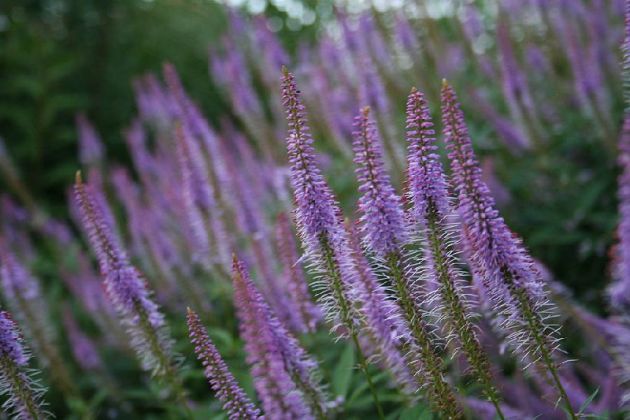
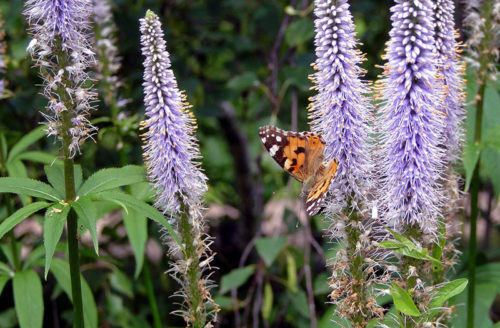
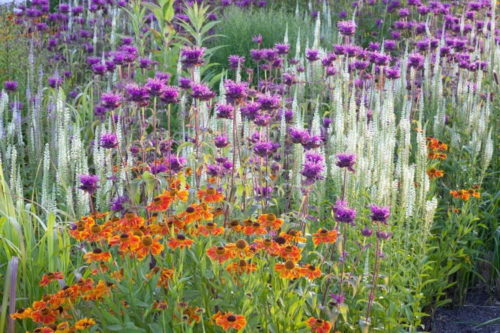
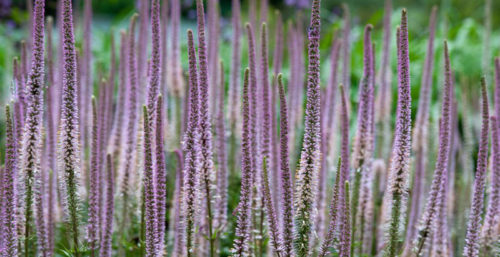
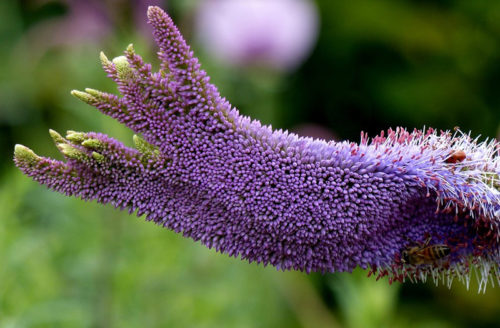
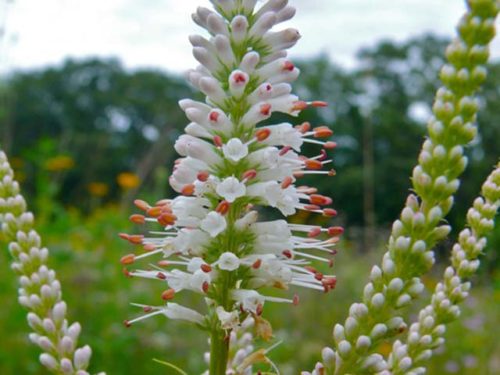
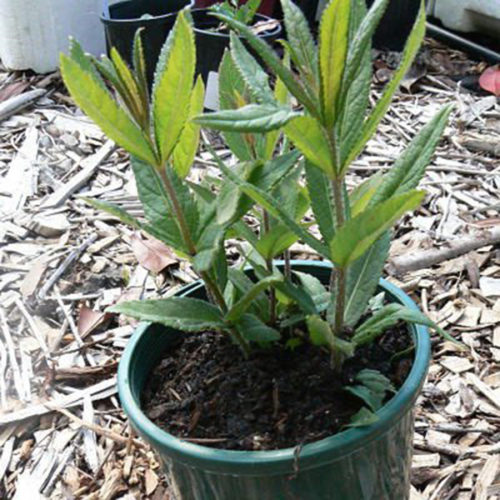
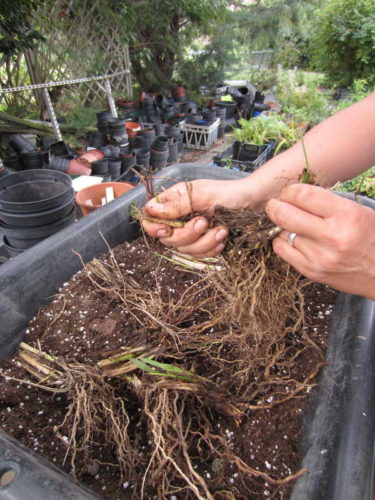
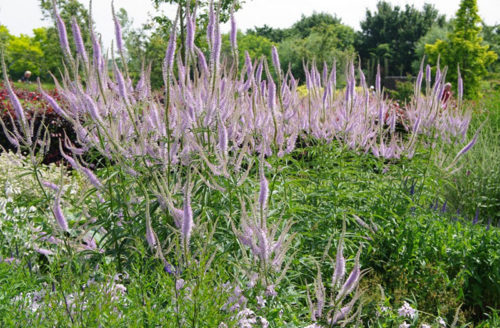
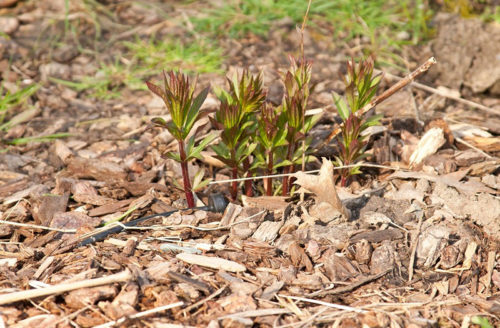
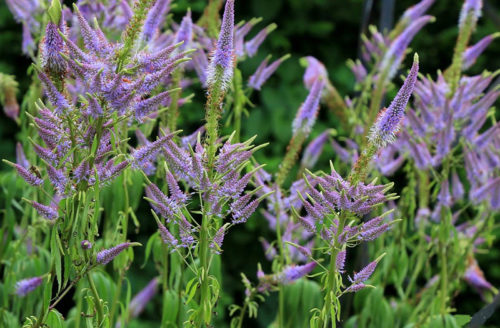
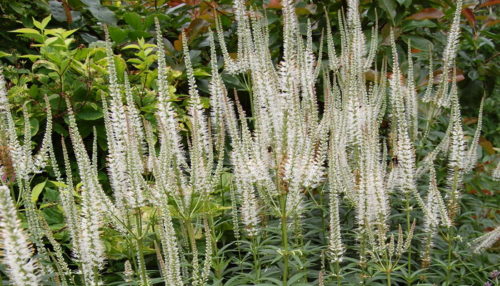
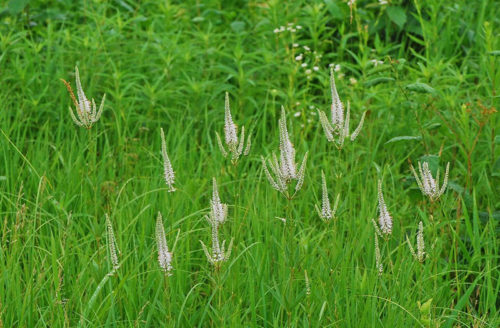
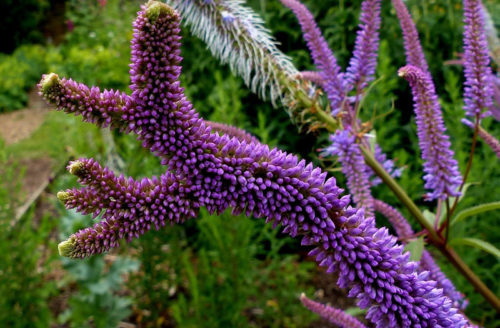

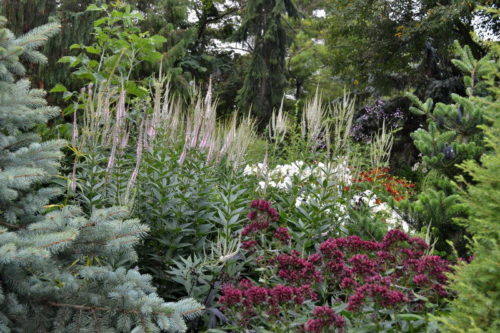












 Start a discussion ...
Start a discussion ...